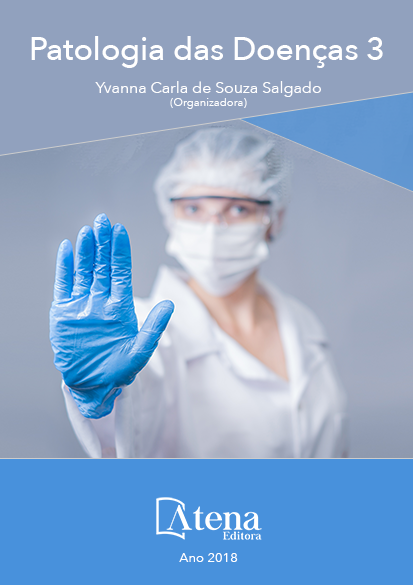
ALTERAÇÕES DO EQUILÍBRIO HIDROELETROLÍTICO NO TRATAMENTO DA COINFECÇÃO LEISHMANIA – HIV
As leishmanioses podem modificar
a progressão da doença pelo HIV e a
imunodepressão causada por este vírus facilita
a progressão das leishmanioses. Logo, em
pacientes coinfectados (leishmaniose + HIV),
a droga de primeira escolha é o desoxicolato
de anfotericina B, seguidas pelas demais
alternativas terapêuticas. Diante disso, o
objetivo do trabalho é relatar através da
análise retrospectiva descritiva, a ocorrência
de alterações hidroeletrolíticas durante
o tratamento da coinfecção Leishmania -
HIV. Paciente do sexo masculino, 49 anos,
divorciado, compareceu a consulta no HENFIL
Palmas para consulta com infectologista devido
diagnostico prévio de leishmaniose tegumentar
cutâneo-mucosa e infecção pelo HIV, em
tratamento com anfotericina B desoxicolato há
15 dias. Na ocasião referia dor na região lombar
há dois dias, diminuição da frequência urinária,
oligúria e diminuição do jato urinário. Ao exame
físico apresentava-se com desdobramento
de B1, hepatomegalia e elevação da pressão
arterial. Foi então encaminhado para
internação no hospital de referência. Durante
a internação foram realizados exames que
evidenciaram hipocalemia importante (K+=
1,8) e hipomagnesemia (Mg2+= 1,6). Iniciou-se
anfotericina B lipossomal, reposição de potássio
e magnésio. A nefrotoxicidade da anfotericina
B desoxicolato (ABD) sempre foi o maior
obstáculo para seu uso clínico. As principais
manifestações de toxicidade renal da ABD são:
redução da filtração glomerular, hipocalemia e
hipomagnesemia. Todavia, com o uso da ABL a
incidência de nefrotoxicidade é significativamente menor.
ALTERAÇÕES DO EQUILÍBRIO HIDROELETROLÍTICO NO TRATAMENTO DA COINFECÇÃO LEISHMANIA – HIV
-
DOI: Atena
-
Palavras-chave: Hipopotassemia. Toxicidade. Anfotericina B.
-
Keywords: Hypokalemia. Toxicity. Amphotericin B.
-
Abstract:
Leishmaniasis can modify the progression of the HIV disease and the
immunodepression caused by this virus facilitates the leishmaniasis’ progression
. Therefore, in co-infected patients (leishmaniasis + HIV), the drug of first choice
is amphotericin B deoxycholate, followed by other therapeutic alternatives. With
this knowledge, the objective of the study is to report through the retrospective
descriptive analysis the hydroelectrolytic occurrence alterations during the treatment
of Leishmania - HIV coinfection. A 49-year-old male patient, divorced, attended
in consultation at HENFIL Palmas for consult with an infectologist with a previous
diagnosis of mucocutaneousleishmaniasis and HIV infection on treatment with
amphotericin B deoxycholate for 15 days. At the time referred pain in the lower
back for two days, decreased urinary frequency, hypouresis and decreased urinary
flow. Physical examination showed B1 unfolding, hepatomegaly, and elevated blood
pressure. He was then forwarded for admission to the referral hospital. During the
hospitalization, examinations were performed that showed important hypokalemia
(K+= 1.8) and hypomagnesaemia (Mg2+= 1.6). Liposomal amphotericin B (LAB) was
initiated, potassium and magnesium replacement. The nephrotoxicity of amphotericin
B deoxycholate (ABD) has always been the major obstacle to its clinical use. The main
manifestations of renal toxicity of ABD are: reduced glomerular filtration, hypokalemia
and hypomagnesemia. However, with the use of LAB, the incidence of nephrotoxicity
is significantly lower.
-
Número de páginas: 15
- Ray Almeida da Silva Rocha


